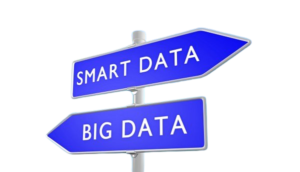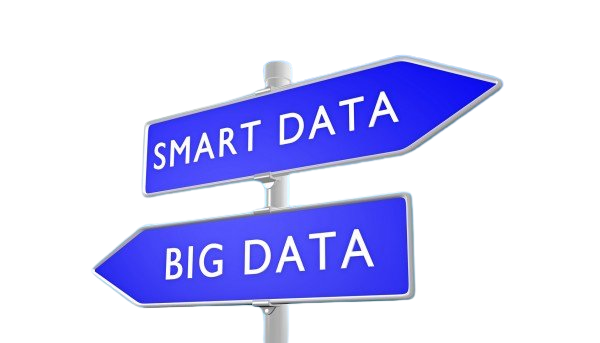Smart data is the process of filtering and analyzing big data to extract meaningful and actionable insights. It involves using advanced analytics tools and techniques to identify patterns and trends, and leveraging these insights to make informed decisions for your business.
As businesses continue to collect vast amounts of data, the challenge of making sense of this information becomes increasingly daunting. While big data has the potential to revolutionize decision-making, the sheer volume of information can be overwhelming. That’s where smart data comes in the ability to filter and analyze data to extract actionable insights.
In this post, we’ll explore strategies for moving from big data to smart data, and how to leverage it to make informed decisions for your business.
Understanding Smart Data
Smart data is the process of filtering and analyzing big data to extract meaningful and actionable insights. It involves using advanced analytics tools and techniques to identify patterns and trends, and leveraging these insights to make informed decisions for your business. It helps to transform large volumes of data into targeted, relevant, and usable information that can drive business success.

Strategies for Extracting Actionable Insights
To move from big data to smart data, businesses need to develop strategies that help them filter and analyze data to identify insights. Here are some strategies to consider:
-
Focus on Business Goals
When working with data, it’s important to have a clear understanding of your business goals. This will help you identify the types of data you need to collect and analyze to make informed decisions. By focusing on your business goals, you can prioritize the data that is most relevant to your needs.
-
Leverage Advanced Analytics
Leveraging advanced analytics tools can help you identify patterns and trends in your data that may not be immediately apparent. Tools like machine learning, predictive analytics, and natural language processing can help you uncover insights that you may have otherwise missed.
-
Use Visualization Tools
Data visualization tools can help you present your data in a way that is easy to understand and interpret. Visualization tools like charts, graphs, and maps can help you see patterns and trends in your data that may be difficult to spot in a spreadsheet.
-
Collaborate Across Teams
Collaborating across teams can help you identify new insights and perspectives on your data. By working with different teams, you can leverage their expertise and insights to identify new trends and patterns in your data. This can help you make more informed decisions for your business.
Benefits of Smart Data
There are several benefits to moving from big data to smart data. By focusing on actionable insights, businesses can make more informed decisions that can drive success. It can help businesses:
- Make informed decisions
- Identify new opportunities
- Optimize processes and operations
- Increase efficiency and productivity
- Improve customer experiences
Challenges of Implementing Smart Data Strategies
While there are many benefits, there are also challenges to implementing these strategies. Some of the challenges include:
-
Technical complexity of smart data:
It requires advanced analytics tools and techniques, which can be complex and difficult to implement.
-
Data quality of smart data:
It relies on high-quality data, which can be difficult to obtain and maintain.
-
Data privacy and security of smart data:
With the increasing concerns over data privacy and security, it’s important to ensure that strategies comply with relevant regulations and standards.
Conclusion
By moving from big data to smart data, businesses can effectively leverage their data to gain insights, optimize their operations, and make data-driven decisions that can impact their bottom line. However, this process requires careful planning and execution, as well as a focus on building a strong data infrastructure and analytics capabilities. With the right strategies and tools, organizations can unlock the full potential of their data and gain a competitive advantage in their industry. As data continues to grow in volume and complexity, moving towards it will be critical for businesses to stay ahead of the curve and drive continued success.
BACK










